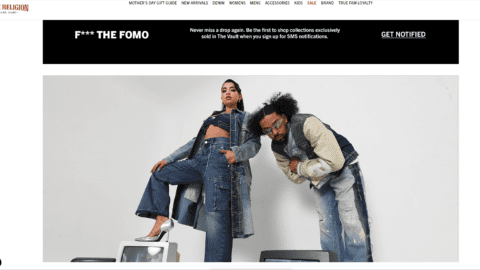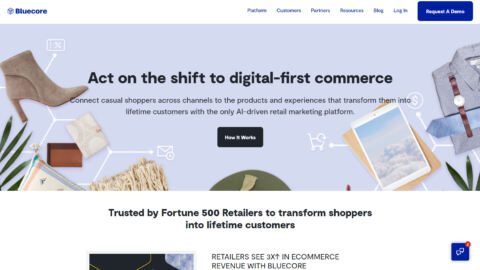With the continued rise of smartphones, most retailers are looking for ways to open and realize the full potential of the mobile channel to increase customer engagement, convenience, and loyalty. With some thought, mobile can also aid in customer acquisition and revenue generation.
A mobile app is one of the best mobile tools available to reach shoppers and can provide a more captivating and convenient user experience than other mobile vehicles like SMS, mobile web or QR codes. But mobile apps need a good engagement strategy to keep them relevant. Every retailer or brand should aim to create a mobile app strategy that encourages the consumer to engage on a regular basis. Depending on the business model, a successful mobile engagement strategy should have 30% or more of customers interacting or transacting with the brand on a weekly basis.
A mobile app with integrated mobile web content can yield better engagement in a more cost-effective manner than a mobile app alone. With this in mind, here are seven steps to employ in a hybrid mobile app + web strategy:
1. Make the customer’s life more convenient
A cornerstone of the mobile app + web strategy is to only provide mobile functionality that puts the customer’s needs first, which may mean including complementary or relevant content that may not be directly relevant to the business, but is relevant to customer. For example, an apparel retailer’s app may allow consumers to shop, but should also deliver functions such as the ability to read reviews, access mobile-enabled loyalty cards, or link to other mobile web content such as fashion magazines’ coverage of the brand’s looks.
2. Respect the customer’s sense of control
Leveraging the smartphone’s “push notification” provides a subtle alert to customers that there is something new for a customer to view, and makes it their choice when to access the information. A simple badge notification, instead of intrusive sounds or pop-up alerts, will gain the user’s trust and eliminate fall-off.
3. Add new functionality on a regular basis to keep the customer engaged
One in four apps are downloaded and never used again. Don’t let your app be one of them! The time and cost of making ongoing changes to a mobile app can make retailers reluctant to add new features or content. But, like web sites, a good app needs to provide fresh, relevant content and updated functionality to ensure its continued use.
If a mobile app is structured to integrate with mobile web, then adding mobile web content and functionality to the mobile app is easy and dynamic, and does not force the consumer to access these changes via the app store upgrade process. This reduces consumer inconvenience and helps maintain interest, while reducing the cost of keeping the mobile app functions fresh and relevant to customers.
4. Integrate existing loyalty and direct marketing programs
For brands and retailers with an existing loyalty and/or direct marketing program in the physical and online channels, extending the program to the mobile channel is a must. Customers notice and appreciate consistency across all channels, and reward brands with higher degrees of loyalty.
Also, carrying physical loyalty cards has become unwieldy and can be a barrier to loyalty program participation. Mobile loyalty cards stored in the smartphone can attract new customers who don’t ordinarily participate in loyalty programs or help existing customers use their cards more often by adding the ability to conveniently access accumulated points or redeem rewards from the app.
Existing print/SMS/email programs can easily be integrated into the mobile channel via the app to extend campaign reach. The app then becomes another vehicle to target customers allowing the business to track the results more effectively.
5. Include upcoming sales, events, advertising and offers in the mobile app
Successful mobile marketers consider apps part of everyday marketing communications to customers on-the-go. Brands can use the app to:
- Provide reminders and notifications in advance of upcoming sales and events to boost awareness and generate traffic.
- Implement push notification and banner ads to the mobile app to keep customers responsive to new information on events and offers.
- Integrate print and email offer campaigns to the mobile app to increase customer redemption and sales, because customers will always have offers and coupons with them.
- Incorporate a “share” function with mobile offers to encourage viral distribution to the customer’s social network.
- Integrate mobile coupons and offers to the business’ social media campaigns, as well as QR codes in print marketing campaigns, to enable delivery directly to the mobile app.
6. Implement mobile wallet functionality
For retailers that issue statements, invoices or receipts, the mobile app should provide the ability to store and retrieve these types of content provided in the physical or online channels. The retailer’s ability to send an invoice or statement — and the consumer’s ability to select merchandise and complete a secure payment transaction from within the app — provides tremendous utility and convenience.
7. Integrate with existing business systems
Look at business systems across the organization that deliver or communicate content to customers to determine if it makes sense to engage mobile customers with the same content. For example, integrating an existing loyalty system that may communicate points and order history via print or online translates well to a mobile app. Other systems to consider converging to mobile are: CRM/analytics, payment card processing, billing systems, and documents and statement issuance.
The more channels a retailer can provide customers to engage with the brand, and the more consistency exists across all channels, the easier it is for customers to maintain or increase their interaction with the retailer. The proliferation of mobile apps has raised the bar on customers’ expectations of performance, and acting upon these strategies can help ensure that the app becomes a customer favorite.
David Thomas is founder and CEO of Omnego, a Toronto-based provider of white-label mobile app platform with advanced mobile marketing, loyalty, wallet and other engagement tools. Reach him at dthomas@omnego.com












